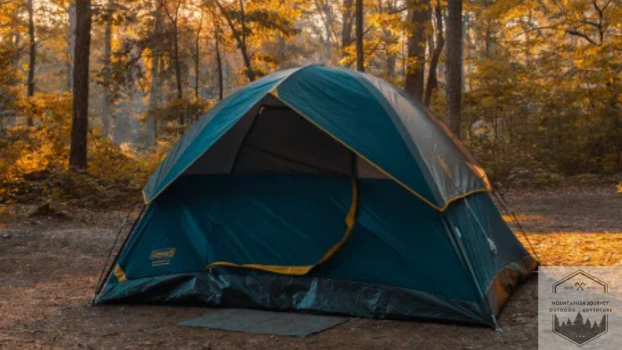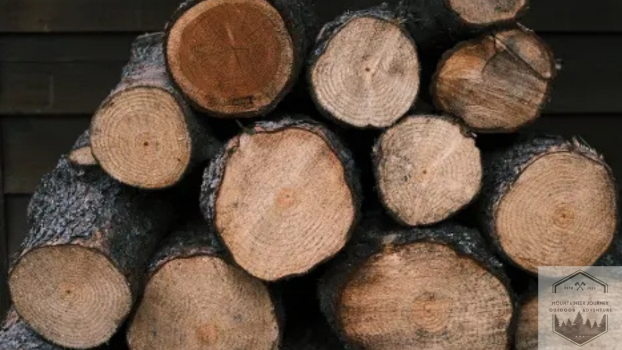How To Set Up A Tent | Easy Guide

In this article we are going to review how to set up a tent. Tents are a must for any outdoor adventure, shelter, privacy and a home away from home in the wild. But setting up a tent can be intimidating especially for newbies.
That’s why we created this step by step guide to help you master the basics of tent setup. Whether you’re going for a weekend camping trip or a backpacking adventure, knowing the basics of tent setup will make your outdoor experience so much better.
We’ll take you through the whole process from choosing the right tent for you to the final adjustments for stability and comfort. We’ll cover everything from finding a campsite, preparing the ground, assembling the tent poles, attaching the rainfly and securing guy lines.
We’ll also give you tips and tricks for troubleshooting common tent setup issues like windy conditions, uneven terrain and rain.
How to Choose and Set Up a Tent
With so many options out there, choosing a tent can be overwhelming for newbies and seasoned campers alike.By considering a few factors you can make an informed decision.
When dealing with a new tent, it’s important to be aware of the challenges and considerations, such as pre-trip preparation and practice, to ensure a smooth setup experience.
Types of Tents
When choosing a tent, you need to know the different types. There are several types of tents, each for different camping scenarios. It’s important to lay the tent out flat on a tarp before assembly to ensure stability and ease of setup:
- Dome Tent: These are freestanding tents known for easy setup and great stability. Suitable for all camping environments including backpacking.
- Cabin Tent: Cabin style tents are more spacious and for family camping. They have vertical walls for more headroom and space for bigger groups or families.
- Backpacking Tent: For lightweight travel, backpacking tents are compact and portable. For hikers and campers on the move.
- Pop-Up Tent: Pop-up tents are super easy to set up and take down. For quick getaways and spontaneous trips.
- Four-Season Tent: These tents are built to withstand extreme weather. Insulated and for winter camping or harsh environments.
- Tunnel Tent: Tunnel tents are designed with a series of curved poles, creating a tunnel-like structure. They offer excellent space and are relatively easy to set up. Unlike dome tents, tunnel tents need to be staked down to maintain their shape and stability.
Size Matters
First off, you need to determine the size of the tent based on the number of occupants and gear to be accommodated. For solo campers or couples, a smaller tent will do. For families or groups, a larger tent with multiple rooms or compartments will be needed for comfort and privacy.
Climate
Also consider the camping location and climate. If the area is known for heavy rain or strong winds, a tent with sturdy construction and waterproofing features is a must. Four-season tents for extreme cold and snow, three-season for spring, summer and fall.
Durability and Weight of Tent Floor
And also the durability, ease of setup and weight of the tent. A lightweight tent for backpackers, a heavier one with more room for family camping trips. Consider the frame material, fabric quality and additional features like rainflies, vestibules and storage pockets.

How to Set Up a Tent
Camping is one of the skills to master. Whether you’re a newbie or an experienced camper, learning the basic tent setup process is key to a successful outdoor adventure. Setting up a tent may seem intimidating at first but with this step by step guide you’ll be a pro in no time.
Choosing a Campsite
First step in setting up your tent is to choose the campsite. Your campsite choice can make or break your camping experience, and how to set up a tent. Here are things to consider:
- Level Ground: Find a flat area free from slopes for a good night’s sleep. Setting up on uneven ground will cause discomfort and sleeping issues.
- Safety: Check the area for hazards like loose rocks, tree branches or ant hills that can affect your safety and tent placement.
- Proximity to Water: Place your campsite close to a water source for convenience but not so close you’ll flood during heavy rain.
- Leave No Trace: Follow Leave No Trace principles by setting up your tent at least 200 feet away from lakes and streams to minimize your impact on the environment.
Setting Up the Tent Poles
Next step is to set up the tent structure:
- Tent Poles: Assemble the tent poles according to the manufacturer’s instructions, make sure each section connects securely. Get familiar with the color-coding or numbering of the pole sections to make it easier.
- Attaching the Poles: Slide the tent poles through the pole sleeves or attach to the corresponding clips. Feed each pole section through its respective channel, be gentle and don’t bend or stress the poles.
- Raise the Tent: Lift the tent to its full height while keeping the poles centered and balanced. Stake down the corners with tent stakes or anchors. Make sure the tent is tight and wrinkle free.
Ensure the tent floor is secured properly and consider using a footprint for extra protection against abrasion and moisture.
Most tents come with components like rainfly wraps and guylines, which are essential for enhancing stability during setup.
Adding the Rain fly for Extra Protection
Last step in setting up your tent is to attach the rain fly for extra protection. Here’s how:
- Align and Attach: Place the rain fly over the tent, make sure it lines up with the doors and windows.
- Attachment: Use the provided attachments, usually clips or hook-and-loop fasteners to attach the rain fly to the tent body.
Tent setup may vary depending on the tent design and style so make sure to read your tent’s instructions. Practicing setting up your tent before your camping trip is also a good idea so you can troubleshoot any issues and make the process smoother.
With time and practice you’ll be setting up your tent like a pro and have more time to enjoy the outdoors and relax in your organized camping haven.

How to Stake a Tent with Tent Stakes
When setting up a tent one of the most important things to consider is stake placement. Properly securing your tent to the ground will not only make it stable but also protect it from strong winds or sudden gusts. Tent stakes are one of the most integral parts of how to set up a tent.
First, find a good camping spot. Look for a flat and well drained area to set up your tent. Once you have found a good spot, unpack your tent and lay it out flat. A flat tent serves as the base for the pole setup, ensuring the tent is square and stable during the pitching process.
Next, find the corners of the tent and insert stakes at each corner. Make sure to drive the stakes into the ground at a slight angle, away from the tent. This will give extra stability in case of strong winds.
After securing the corners, move to the middle of each side and insert additional stakes. The number of stakes will depend on the size of your tent but a good rule of thumb is to place them every 2-3 feet.
Pull the tent fabric tight and secure to the ground by attaching the stakes through the loops or rings. Double check that all stakes are in and tight.
By following these placement you’ll have a stable and secure tent throughout your camping trip. Remember, mastering basic tent setup is key to a comfortable camping experience.
Tent Fly (Rain fly) Setup
One of the most important parts of tent setup is the installation of the rain fly. The rain fly is a waterproof cover that will protect your tent from rain, snow, and other elements.
Not only will it add extra insulation but it will also extend the life of your tent. To make sure you’re fully prepared we’ve put together a step-by-step guide on how to set up your rain fly.
Before you start make sure you have chosen a good spot for your tent. Once your tent is anchored to the ground start by unfolding the rain fly and find the attachment points.
These are usually found on the outer corners of the tent. Attach the rain fly to the tent by clipping or hooking onto these attachment points. Make sure it’s evenly tensioned and fully covering the tent body.
You get better with practice so don’t be discouraged if it takes a few tries to get the hang of it. Soon you’ll be a pro at setting up your tent and ready to go on many more adventures in the great outdoors. So get out there, connect with nature and make memories under the stars!
Frequently Asked Questions
Is setting up a tent hard?
No! Setting up a tent is not hard. Here’s a brief summary:
Tent Type
- Pop-up Tents: Easiest to set up, just unfold and secure.
- Dome Tents: Straightforward, 2-3 poles. Despite the setup challenges, the views from the tent doors can be breathtaking.
- Cabin Tents: Larger and more complex, more time and effort.
- Backpacking Tents: Designed to be portable, can be tricky due to lightweight components and compact design.
Tents are designed to be user friendly, many have color coded poles and simple instructions. With a little practice setting up a tent is a quick and easy task.
What is the fastest tent to set up?
The fastest tents to set up are pop-up tents also known as instant tents. These tents are designed for speed and ease for campers who want to minimize setup time. Here’s why pop-up tents are so fast to set up:
Design: Pop-up tents are pre-assembled with a built-in frame and fabric attached. They are designed to pop into shape as soon as you take them out of the bag.
Setup: To set up a pop-up tent just take it out of the bag, undo the strap or fastening and throw it into an open space. The tent will instantly pop into shape. All that’s left is to stake it to the ground which helps to stabilize the structure especially in windy conditions.
Time: It takes a few seconds to a minute to set up. These are the fastest to pitch.
Pop-up tents are convenient and fast but not always the best for bad weather or if you need more space and durability. But for festivals, casual camping or beach trips they are perfect because of the quick setup and ease of use.
Can you set up a tent by yourself?
Absolutely! every time i set up a tent, i do it solo. You must make sure you properly set up your tent stakes and poles in the proper position or it can very frustrating!
Which direction should a tent face?
I like to set up my tent facing east so I get a great sunrise in the morning. Keeping my back to the left will also keep the bright sunset out of my eyes as well.
Want More Articles?
Best Hikers Quotes To Inspire Your Next Adventure
Understanding Thru-Hiking | What Is a Thru Hiker?
Hiking vs Walking | Key Differences Explained
Leave No Trace Seven Principles | For Hikers
Adventure Awaits,
Tyler


